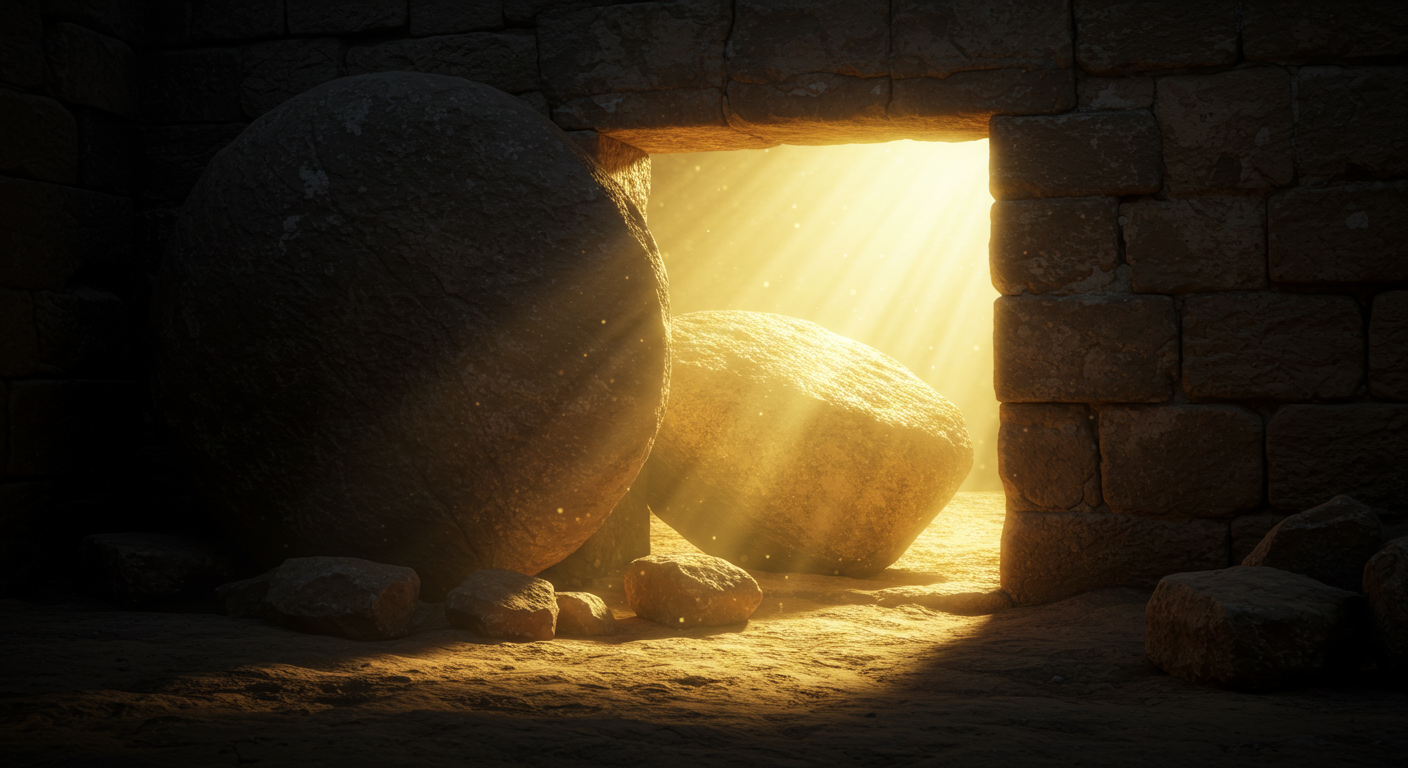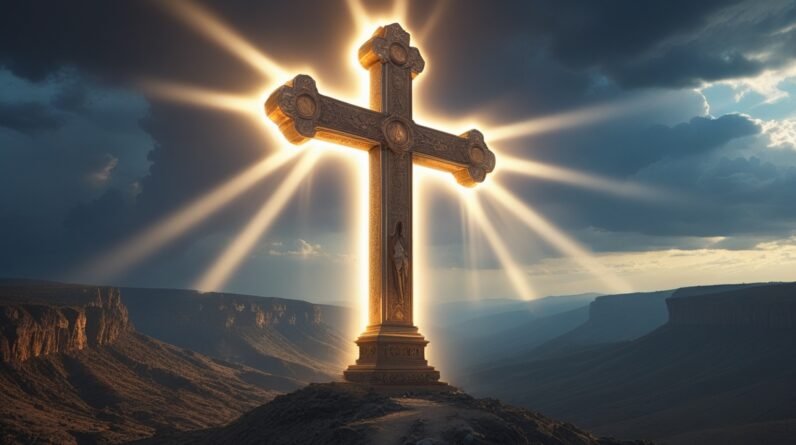The Empty Tomb: Proof That Jesus Is Alive Forevermore
You’ve probably heard the story of Easter a thousand times — the cross, the burial, the silence of the tomb — and then the shout that changed history forever: He is risen! But why should the empty tomb of Jesus mean anything to you today? Why should you care whether a tomb in Jerusalem was empty two thousand years ago? In this article, you’ll walk through the evidence, the eyewitness testimony, the theological meaning, and the life-changing implications of the empty tomb of Jesus. My hope is to help you see that this is not a quaint legend but a powerful, historical proof that Jesus is alive forevermore.
Why focus on the empty tomb of Jesus?
You might wonder why Christians emphasize the empty tomb. The resurrection is not a peripheral doctrine — it’s the core of Christianity. Without the resurrection, the faith collapses into tragedy; with the resurrection, everything changes. The empty tomb of Jesus is the physical, historical starting point for the claim that Jesus conquered death. It’s the moment the silence of death is broken and hope is restored for all who will believe.
The setting: crucifixion, burial, and the sealed tomb
To understand the significance of the empty tomb, you need the backdrop. Jesus was crucified under Pontius Pilate, and after His death, He was buried by Joseph of Arimathea. The burial was hurried but careful; Joseph wrapped Jesus’ body in linen and laid Him in a new tomb cut out of rock. The Jewish leaders, concerned about the possibility of Jesus’ followers claiming resurrection, requested that Pilate secure the tomb with a seal and guards. This detail makes the later discovery of an empty tomb even more remarkable. You can read the account of the burial and the security measures in the Gospel narratives, such as Matthew 27:57-66.
The eyewitness accounts: the gospel narratives
When you examine the four Gospels — Matthew, Mark, Luke, and John — you find independent testimonies that converge on one unmistakable fact: the tomb was empty. Each Gospel gives its own perspective and details, but none contradicts the central historical claim that Jesus’ body was missing.
Matthew: angels, an empty tomb, and a living Savior
Matthew’s Gospel begins Easter morning with Mary Magdalene and the other Mary visiting the tomb, an earthquake, an angel who rolls back the stone, and the angel’s proclamation: “He is not here; he has risen” (Matthew 28:1-10). Matthew emphasizes the authority and triumphant power of Jesus, showing that death could not hold Him. The narrative highlights the miraculous nature of the event and the immediate commissioning of the disciples to go and tell the news.
Mark: the empty tomb and the women’s testimony
Mark records that Mary Magdalene, Mary the mother of James, and Salome went to anoint Jesus’ body, only to find the stone rolled away and a young man in a white robe who tells them Jesus has risen (Mark 16:1-8). Mark’s account is poignant in its honesty: the initial reaction is fear, amazement, and bewilderment. Yet the core truth remains — the tomb was empty, and the women were the first witnesses.
Luke: multiple witnesses and the report to the apostles
Luke carefully details the discovery, noting the women’s report and how it was received by the apostles. He names the women — Mary Magdalene, Joanna, Mary the mother of James, and others — and states that they found the tomb empty and returned to tell the apostles (Luke 24:1-12). Luke’s attention to names, places, and chronological detail is a strong marker of historical reporting. He wants you to know that reliable witnesses saw the empty tomb and reported it promptly.
John: personal grief turned to joyful sight
John’s Gospel gives a very personal portrait. Mary Magdalene goes to the tomb while it’s still dark, sees the stone removed, runs to tell Peter and the beloved disciple, who then run to the tomb and find the linen wrappings lying there (John 20:1-18). John’s narrative captures the emotional arc from grief to astonished joy. The empty tomb was not an abstract fact — it was a reality that transformed people’s lives that very morning.
Who were the first witnesses — and why does that matter
One striking detail across the Gospel accounts is that women were the first to discover the empty tomb and to report it. In the culture of first-century Palestine, women’s testimony was not regarded with the same weight as men’s. You might think this would hurt the story’s credibility, but in fact it strengthens it: if the story were a fabrication, the inventors would have made men — the apostles — the first witnesses. Yet the early accounts consistently note women as the primary witnesses, a strong indicator that the empty tomb narrative preserves genuine historical memory.
Women’s testimony and historical reliability
Your instinct for historical truth should lean toward explanations that account for inconvenient details. The presence of women as the first witnesses is inconvenient for a fabricated story. That strengthens the argument that the empty tomb of Jesus is rooted in real events, not later legend.
Appearances after the empty tomb: seeing the risen Christ
The empty tomb by itself is a powerful piece of evidence, but the story does not end there. The Gospel writers and the apostolic testimony also record encounters with the risen Jesus — appearances to Mary Magdalene, to the disciples on the road to Emmaus, to the gathered apostles, and to many others. The apostle Paul, summarizing the early Christian testimony, lists appearances to Peter, the Twelve, more than five hundred brothers and sisters at once, James, all the apostles, and finally to himself (1 Corinthians 15:3-8). Paul’s list reads like an early creed — concise, public, and designed to be tested by those who knew the events.
Why collective appearances matter
You may ask, can multiple people really see the same apparition? The fact that early Christian preaching invoked numerous witnesses points to experiences that were public and verifiable. If five hundred people claimed to have seen the risen Jesus, the early church warmly invited skeptics to check with those witnesses. That confidence in the reality of the resurrection flows directly from the combination of the empty tomb and public appearances.

The empty tomb in early preaching and preaching’s power
When Peter stood up at Pentecost, his sermon cited the life, death, and resurrection of Jesus as witnessed by God and seen by many (Acts 2:32). The early proclamation of the apostles did not present a vague spiritual idea but a concrete message rooted in historical events: Jesus rose physically and appeared to His followers. The empty tomb is the tangible evidence that began the chain of proclamation that would spread Christianity across the Roman world.
The theological significance of the empty tomb
You’re not looking at an empty stone box for sentimentality. The empty tomb of Jesus carries deep theological meaning: it verifies Jesus’ identity, fulfills prophecy, defeats death, and secures your hope for eternal life.
Jesus’ identity confirmed
Jesus had claimed to be the Son of God and had said He would rise from the dead. The empty tomb confirms that His words had authority. As He told Martha, “I am the resurrection and the life” (John 11:25). The empty tomb is the stage where that claim was vindicated.
Fulfillment of prophecy
The resurrection is also the fulfillment of countless Messianic promises, both implicit and explicit. The suffering and subsequent vindication of the Servant in the prophetic scriptures, particularly Isaiah, point toward death followed by exaltation (Isaiah 53:10-12). The empty tomb shows that God’s saving plan moved from shame to glory, just as the prophets declared.
Victory over death
The empty tomb is the first public evidence that the sting of death has been removed. Paul teaches that because Christ was raised, death is no longer the final power over you (Romans 6:9). Death was defeated decisively, not temporarily. The victory recorded in that open tomb extends to all who are joined to Christ.
Eternal salvation secured
Because Jesus lives forever, He is able to secure your salvation forever. Hebrews explains that Jesus lives to intercede for you continually (Hebrews 7:25). The empty tomb is not an ambiguous sign; it is the seal on God’s power to save for eternity. Peter speaks of this living hope in light of the resurrection, a hope that is imperishable and kept in heaven for you (1 Peter 1:3-5).
The empty tomb and prophecy: God’s plan from the start
The Old Testament pointed toward God redeeming His people through suffering followed by triumph. The psalmist’s words that God would not abandon His Holy One to the grave have often been understood as pointing to Christ’s vindication (Psalm 16:10). The empty tomb shows that God’s promises are reliable — that the suffering was not the end but the pathway to glory.
Historical objections and why they fall short
You may have heard alternative explanations for the empty tomb: the disciples stole the body, Jesus only swooned and later revived, the appearances were hallucinations, or the story was invented. It’s important to weigh these against the evidence.
- The stolen body hypothesis assumes authorities or disciples moved the body. Yet Jesus’ enemies were ready to produce a corpse to quash claims of resurrection; they had the motive and opportunity to do so. Early Jewish accusations did claim the disciples stole the body, which implies they recognized the tomb was empty — but their theory doesn’t stand against the presence of guards and a sealed tomb, nor against the willingness of the apostles to die for their testimony. If they had stolen the body, they wouldn’t have willingly faced martyrdom for a lie.
- The swoon theory suggests Jesus didn’t really die but fainted and later revived. The historical and medical evidence, however, points to real death: Roman executioners were experts, the spear in Jesus’ side confirmed death, and burial practices were thorough. The theory also fails to account for why a half-dead Jesus would inspire the bold, transformed proclamation of the resurrection.
- Hallucination theories struggle with the diversity and number of witnesses. Hallucinations are subjective and usually isolated — yet the resurrection appearances were public and involved many different people at different times and places (1 Corinthians 15:3-8). Collective hallucinations are not a plausible explanation.
When you compare these alternatives with the straightforward historical testimony — the tomb was found empty, the linen wrappings were left, the followers were transformed, and many reported actual encounters with the risen Jesus — the simplest and most coherent explanation is that Jesus rose bodily from the dead.
The empty tomb and the bodily resurrection
It’s vital to realize that the New Testament presents the resurrection as bodily. The empty tomb signifies that Jesus’ body was not left in death but was raised. Paul emphasizes that Christ’s resurrection is not merely a spiritual symbol but a bodily, historical event that guarantees your future resurrection as well (1 Corinthians 15:20-22). The empty tomb is the first instalment of a greater promise — your own bodily resurrection in Christ.
The resurrection’s ripple effects: transformed lives and courageous witness
When you read the book of Acts and the letters of the apostles, you notice a dramatic shift: frightened disciples become bold witnesses, persecutors like Paul become missionaries, and the church grows despite opposition. Why? The resurrection, authenticated by the empty tomb and appearances, gave them the courage to live and die for what they had seen. The resurrection was not an ethereal idea; it changed reality. The early church’s rapid growth and willingness to endure persecution a historical testimony that something real happened.
What the empty tomb means for your life today
All of this history leads to a personal question: what does the empty tomb mean for you today? First, it means that death does not have the last word over you. Because Jesus rose, your hope extends beyond the grave. Second, it means God’s promises are trustworthy. Third, it means that Jesus is with you in daily life — alive, interceding, and active in the world (Hebrews 7:25). The resurrection is not simply past history; it is present power and future hope.
Living in the light of the empty tomb
When you truly believe in the resurrection, your priorities change. Fear of death diminishes, love for God deepens, and the urgency to share this hope with others grows. As Paul wrote, the resurrection is central to your faith because it opens the way for a new life in Christ (Philippians 3:10-11). You begin to live not for the temporary pleasures of this world but for the eternal purposes of God.
How to respond personally: faith, repentance, and commitment
If the empty tomb convinces you that Jesus is alive, your response is straightforward: trust Him. The New Testament invites you to turn from sin and place your faith in Christ, confessing Him as Lord (Romans 10:9). The resurrection guarantees that when you receive Christ, you participate in His new life. Baptism, a public declaration of that faith, symbolizes your union with Christ in His death and resurrection (Romans 6).
An invitation like Jesus offered
This is the same invitation Jesus extended to those first disciples: come, follow me; believe me; live in the power of the resurrection. If you respond, you will find forgiveness, a new purpose, and the promise of eternal life with God. Peter declared that God made Jesus both Lord and Messiah, whom they had crucified and whom God raised from the dead — a message that calls for heartfelt repentance and faith (Acts 2:32-36).
The empty tomb’s promise for the future
Revelation gives you a glimpse of the One who holds the keys of death and Hades — the risen Lord says, “I am the Living One; I was dead, and now look, I am alive for ever and ever!” (Revelation 1:18). Because Jesus is alive forevermore, He can welcome you into that same eternal life. The empty tomb is the proof that God’s redemptive story does not end in defeat but culminates in resurrection and restoration.
Living out the reality of the empty tomb in community
You were not meant to hold this hope alone. The early church gathered to remember the resurrection, to worship the risen Lord, and to encourage one another in faith. When you join with other believers, you participate in a living tradition centered on the risen Christ. The empty tomb unites Christians across time and culture, and it propels the church into mission.
Final reflections: why the empty tomb still matters
As you reflect on the empty tomb of Jesus, remember it’s more than an archaeological curiosity or a theological abstraction. It’s the hinge of history, the reality that turns sorrow into joy, fear into courage, and death into life. The empty tomb demonstrates that God’s love is stronger than death and that His promises are reliable. For every person who has ever faced loss, longing, or despair, the empty tomb speaks a word of life: Jesus is alive, and He offers that life to you.
If you’re moved by this truth, don’t keep it to yourself. Let the reality of the resurrection shape the way you live, love, and hope. Tell others that what began at an empty tomb two thousand years ago is the very reason you can face tomorrow without dread.
Explore More
For further reading and encouragement, check out these posts:
👉 7 Bible Verses About Faith in Hard Times
👉 Job’s Faith: What We Can Learn From His Trials
👉 How To Trust God When Everything Falls Apart
👉 Why God Allows Suffering – A Biblical Perspective
👉 Faith Over Fear: How To Stand Strong In Uncertain Seasons
👉 How To Encourage Someone Struggling With Their Faith
👉 5 Prayers for Strength When You’re Feeling Weak

📘 Jesus and the Woman Caught in Adultery – Grace and Mercy Over Judgement
A powerful retelling of John 8:1-11. This book brings to life the depth of forgiveness, mercy, and God’s unwavering love.
👉 Check it now on Amazon
As a ClickBank & Amazon Affiliate, I earn from qualifying purchases.
Acknowledgment: All Bible verses referenced in this article were accessed via Bible Gateway (or Bible Hub).
“Want to explore more? Check out our latest post on Why Jesus? and discover the life-changing truth of the Gospel!”






